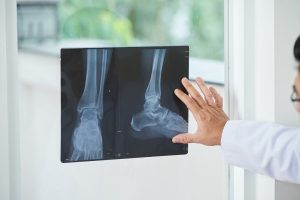
Most sprains won’t hold you down for long. Turning your ankle by stepping on an uneven surface on your lawn, without too much force, might cause you some pain for a day or two. But you should be back to business soon after.
Just make sure you treat it properly – get it up, elevated, and iced in 15-minute intervals for a day or so.
Things can be a lot worse, of course. If you come down hard on a turned ankle, you may actually suffer a fracture. And you know what that means—summer’s over with your foot in a hot, stiff, itchy, clay cast.
But maybe it doesn’t have to be.
New research is suggesting that a removable boot may work just as well – and be far more convenient – than traditional clay casts. This is great news considering that most ankle breaks do not require surgery.
It may depend on the severity of your break and what your preference is, but a removable boot may be a far better option in certain cases.
Ankle support boots allow for some movement in the joint. They also allow for some relief and better hygiene. You can take it off to wash the area and let it breathe.
A new study found that participants reported the same level of pain and functionality after 16 weeks whether they received a cast or removable boot to treat their broken ankle.
So, if you fracture your ankle this summer, talk to your doctor about your options.
Prevention can also help protect your bones. Make sure you’re always wearing suitable footwear with good support and are looking where you’re going. Sticking to the path is safest, but it’s not always guaranteed to be hazard-free.
Eating a nutritious diet and getting enough calcium and vitamin D can also help your bones stay strong, allowing them to put up with a little more pressure.